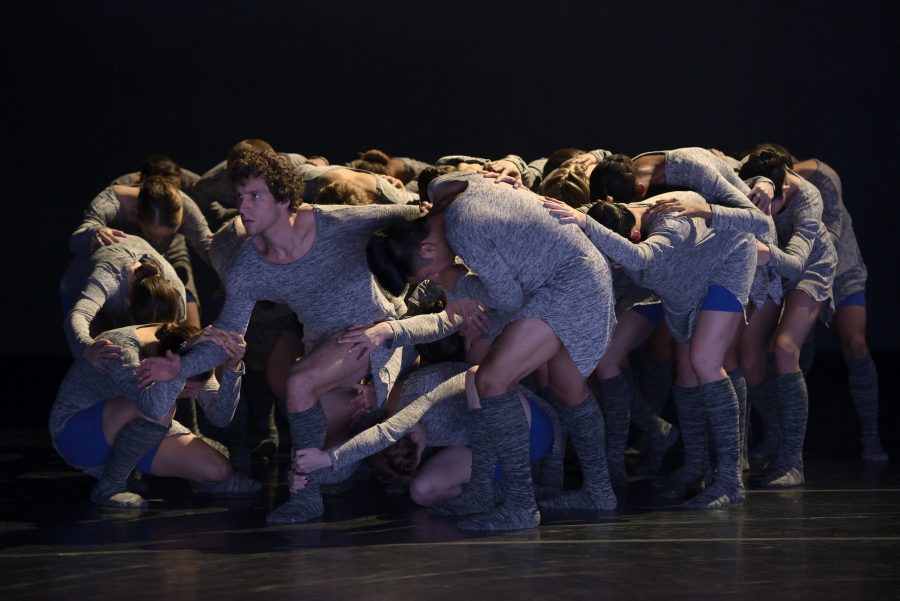For many, the onset of November is a time for gratitude, and the U Department of Ballet’s opening show of the season, Utah Ballet One (which opened Nov. 5), gives audiences plenty to be grateful for.
The opening piece in the show is presented as a kind of “Ballet Cliff Notes” for those new to the art of ballet. A crowd of dancers enter and exit the stage, demonstrating barre work, partnering and elements of famous variations. Complete with PowerPoint slides, clips of interviews with the dancers and narration by choreographer and Acting Department Chair Brent Schneider, the piece feels almost like a live documentary. It even answers that age-old question: what do you call a male ballet dancer? (Hint: It’s not ‘ballerino’). For those in the audience without much ballet experience, the piece will be educational and may create some appreciation for the art. However, it also takes away a lot of the mystique and thrill of a performance, instead leaving the audience feeling a bit like they have attended a lecture.
The second piece is the result of a collaboration between Utah Ballet and the Modern Dance Department’s Performing Dance Company. Choreographed by Lesley Telford, formerly a dancer with the contemporary Dutch company Nederlands Dans Theater, the world premiere features a very large cast. The sight of so many dancers, moving in fluid unison one minute and breaking into frenetic individual motion the next, is mesmerizing. Another interesting feature of this piece is the costuming. All of the dancers wear long, draping, grey shirts over blue shorts with long grey socks. The effect makes the dancers seem to meld into one another — it can even be hard to tell the men from the women.
The penultimate piece, choreographed by Department of Ballet associate professor Melonie Buchanan Murray, is a fascinating visual experience. The four dancers perform while manipulating long strings that stretch from points offstage to their wrists, leg, waist and mouth respectively. The precise choreography makes the strings twine and untwine with each other, all while never entangling the dancers. The lighting of this piece also stands out. The curtains open on a black stage, and as the music starts, stabs of bright white light flicker like lightning. This drama fades into a gorgeous effusion of golden light that highlights the movements of the dancers and of their attached strings.
The final number, “Bow Out,” is a work by famed American choreographer Val Caniparoli, originally created for Richmond Ballet in 1995. It features four couples. The piece is intense but fun, with jazzy movements and clear influences from samba and other forms of dance. Part of what makes the piece so compelling is the constantly changing costumes. At the start, the men wear suit pants and suit jackets over bare chests while the women appear in all-black ensembles of leotards, tights and pointe shoes. As the performance progresses, the jackets are used as part of the choreography, and the dancers frequently add or shed clothing — at one point, the men are left in their shorts. “Bow Out” never stops — except for one black-out — and the dancers put everything on the line during the 20-plus minute piece in order to keep the high level of energy required to execute the fast-paced steps.
U students are incredibly lucky to be able to see such high levels of performance right on our own campus. Utah Ballet One continues this week, with performances at 5:30 p.m. on Nov. 12, and 7:30 p.m. on Nov. 13 and 14, with an additional matinee at 2 p.m. on Saturday. All shows take place at the Hayes Christensen Theatre at the Marriott Center for Dance. Tickets are free with a UCard.


